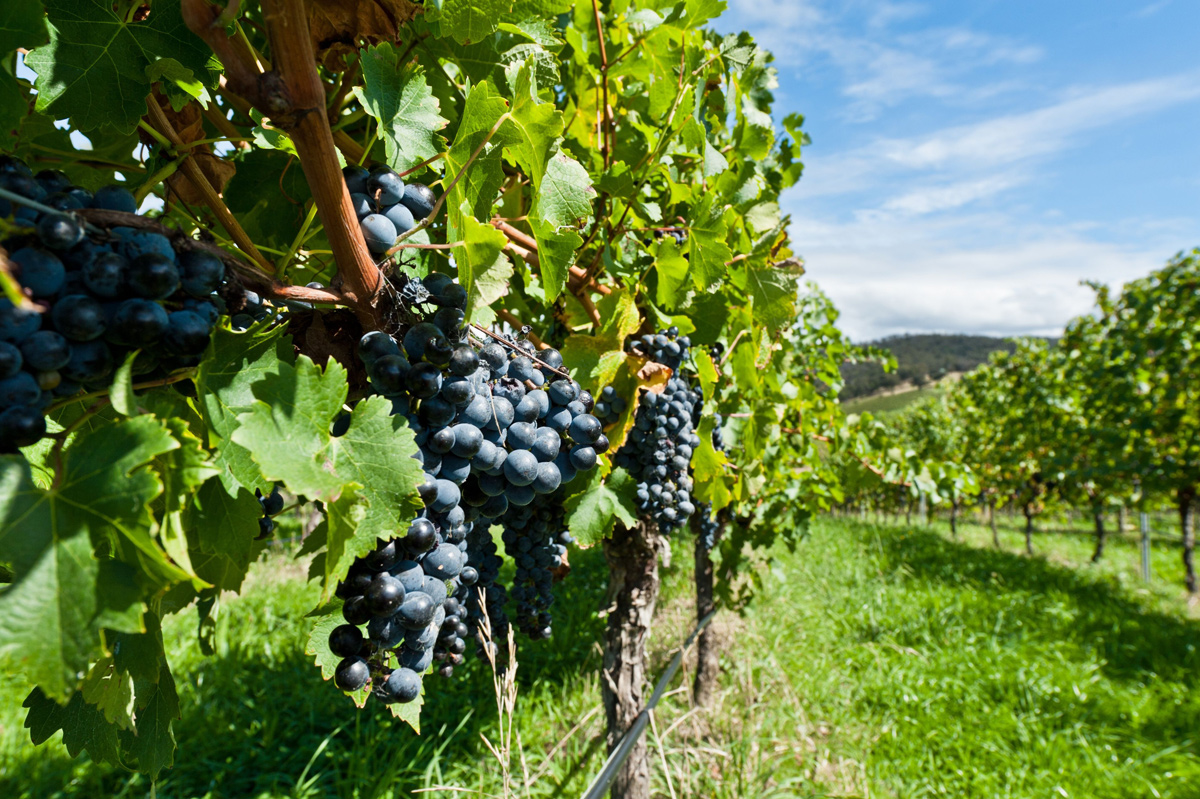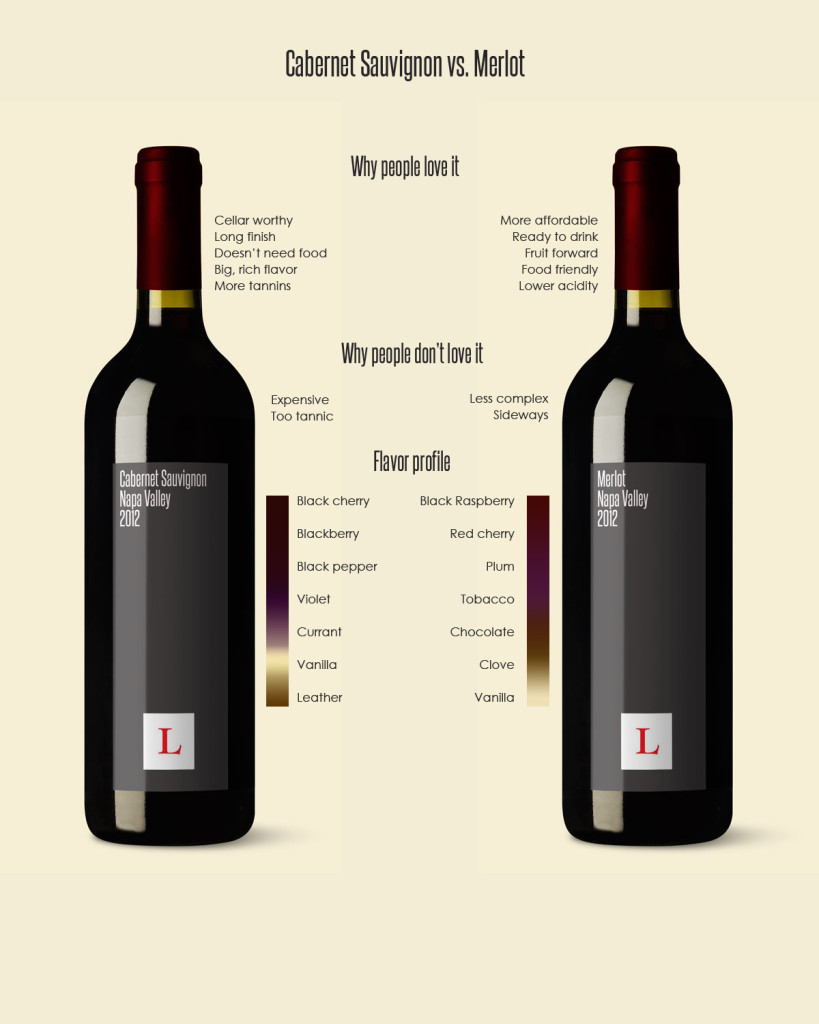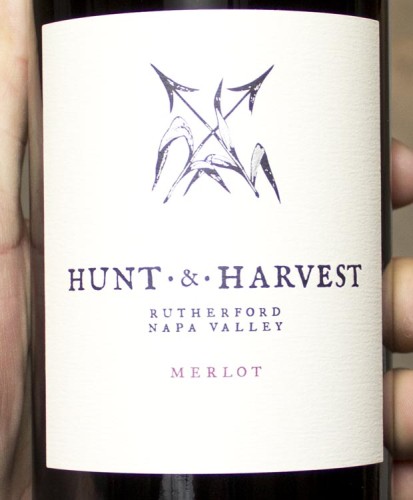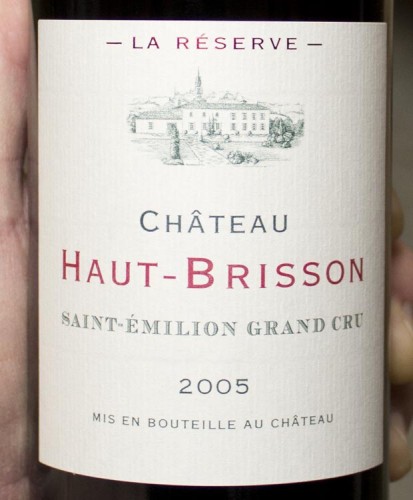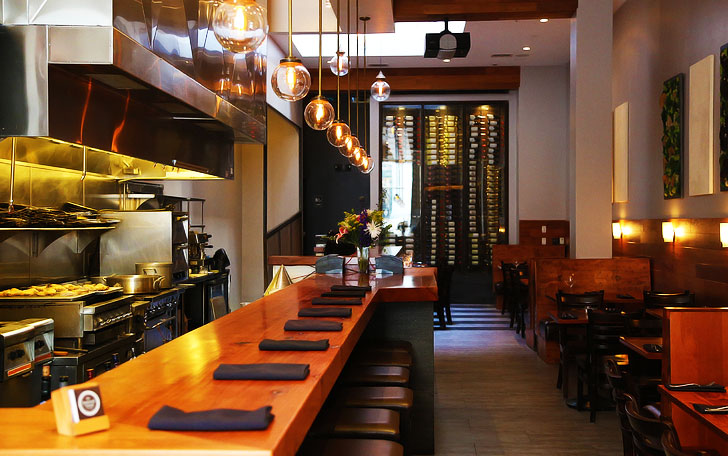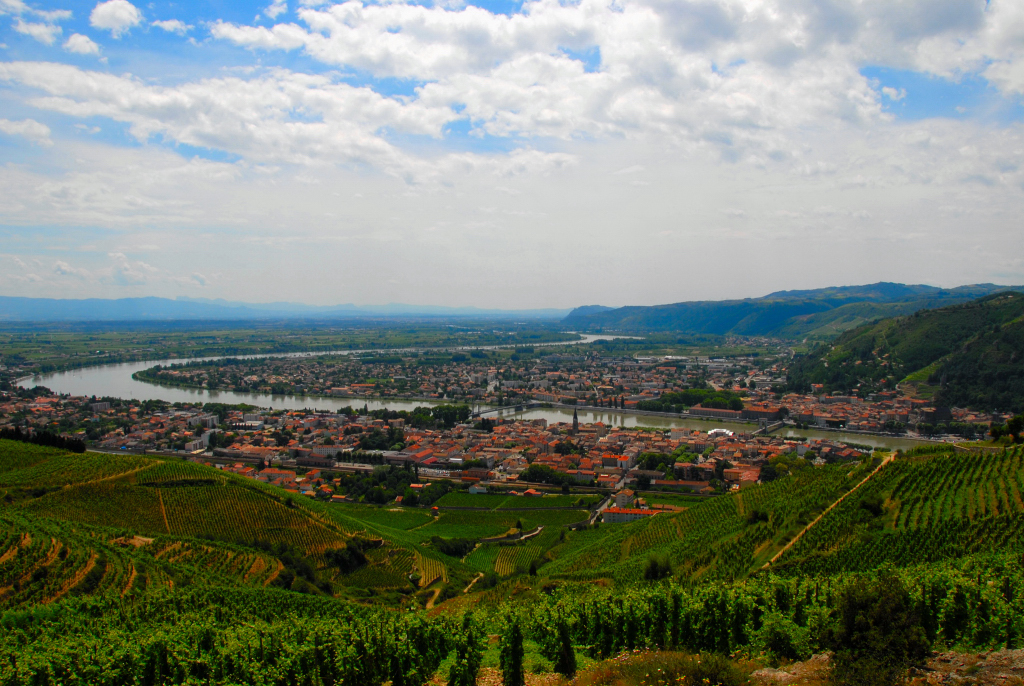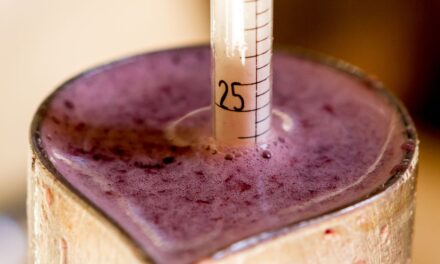Merlot and Cabernet Sauvignon are two of the most popular wines in the world. Both grapes hail from the Bordeaux region, and often accompany each other in blends. Each grape shows off a distinct personality; people love Merlot for its soft, approachable nature that makes it easy to drink at a young age, and appreciate Cabernet for its bigger structure and ability to develop as it ages for many years. But how do you identify the character of Merlot and Cab?
Early Origins
Both varietals came to the United States from Bordeaux and have a great deal of similarity thanks to their shared Cabernet Franc lineage. Cabernet Sauvignon is a cross between Cab Franc and Sauvignon Blanc. It wasn’t until the late 2000s that scientists traced Merlot’s lineage to an obscure grape they named Magdeleine Noire des Charentes, known for its early ripening. By the 19th century, Merlot was firmly established as the dominant grape on the “Left Bank” of the Gironde river and it remains the most commonly grown variety in France.
Merlot’s Rough Patch
Merlot’s rise in popularity took an abrupt hit when the movie “Sideways” came out over ten years ago. As growers planted it everywhere, Merlot production started following a formulaic reduction into a sweet, easy drinking wine with little personality. This Miles to exclaim “No, if anyone orders Merlot, I’m leaving. I am NOT drinking any fu#@ing Merlot!”. This outburst had a long lasting influence that some dubbed the “Sideways Effect“.
Old World vs New World Styles
Two very different winemaking styles exist for both grapes. The “Old World” refers to traditional wine growing regions in Europe where the climate is often cooler. Old World wines have higher acidity, less pronounced core fruit flavor, and more earthy, mineral, floral, and savory notes. The “New World” includes places like California, Argentina, and Australia, where warmer climates result in riper flavors and higher alcohol, and winemaking techniques favor more extracted, oak-influenced styles. Of course, these regional generalizations don’t always reflect the true nature of a wine from either place. For example, Merlot grown in the cooler climate of Washington state often shows a balance of New World ripeness and Old World structure and Cabernet from the Right Bank in Bordeaux is often ripe and powerful.
Having trouble figuring out which winemaking style fits a Merlot or Cabernet? Wines don’t come labeled one or the other but you can look for clues in the descriptions. New World wines often use words like “silky”, “bold” and “opulent” while Old World wines are framed around “elegant”, “balanced” and “savory” descriptors.
Is Cabernet always bigger and bolder than Merlot?
Not always. A few basic factors influence the style Merlot. First is the climate. Warmer regions tend to produce riper grapes with stronger flavors in the blue/black fruit spectrum. In Saint Emilion the average temperature in July is around 70 degrees Fahrenheit, while in Napa the average daytime temperature is closer to 80 degrees.
The elevation also plays a role, as hillside grapes grown at elevation tend to put more stress on the vines, resulting in smaller, more compact berries with bigger tannins and bolder flavors.
Finally, the actual blend itself has a huge influence on the style. In California a wine labeled “Merlot” or “Cabernet Sauvignon” must include at least 75% of that wine type. That means the remaining percentage can include a different wine type. The addition of Merlot to more robust wines like Cabernet Sauvignon and Malbec adds a fleshy mid-palate and rounds out the fruit flavors. On the opposite side, adding a small percentage of strong Cabernet to a Merlot can add a certain amount of depth and structure.

